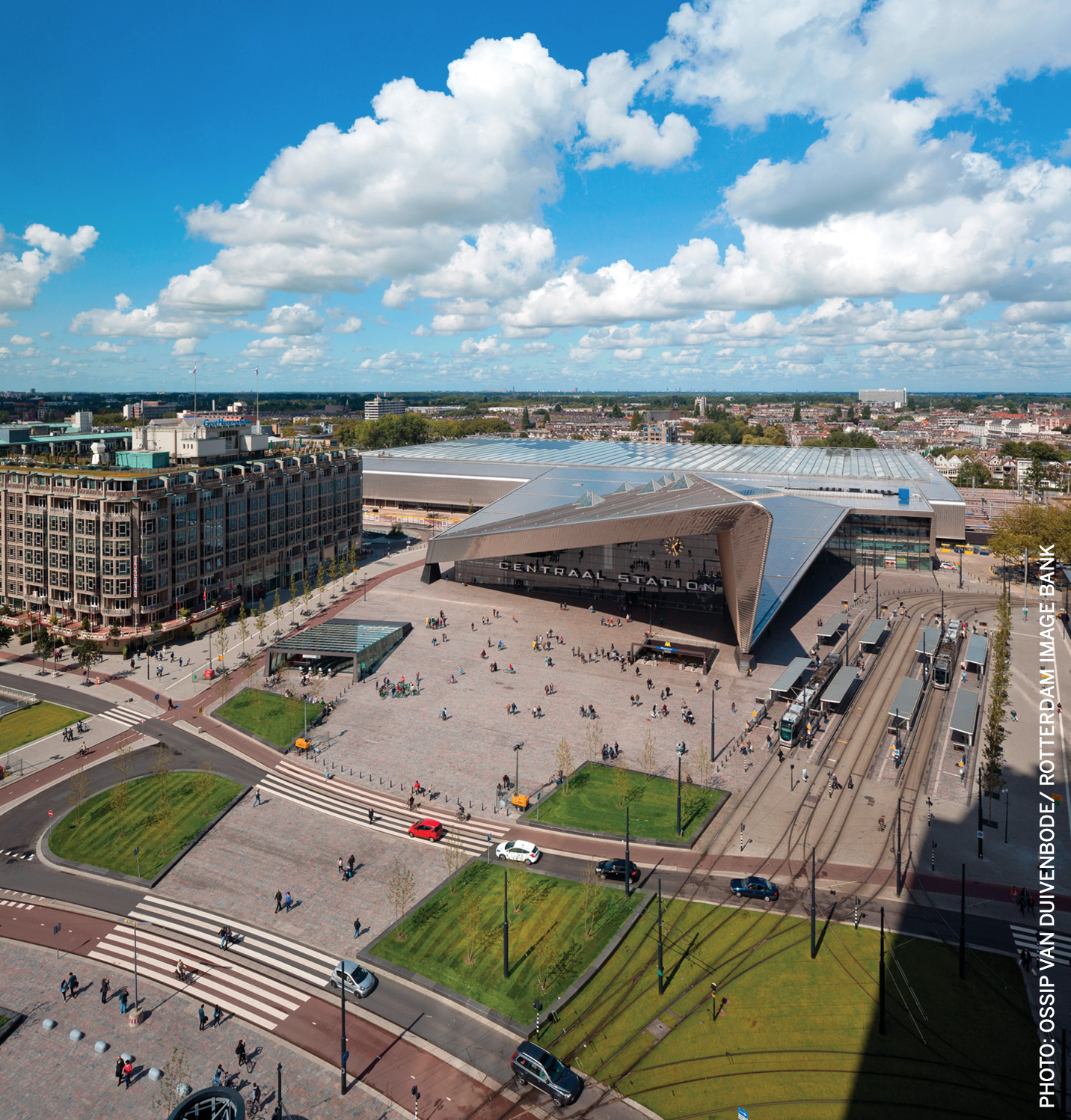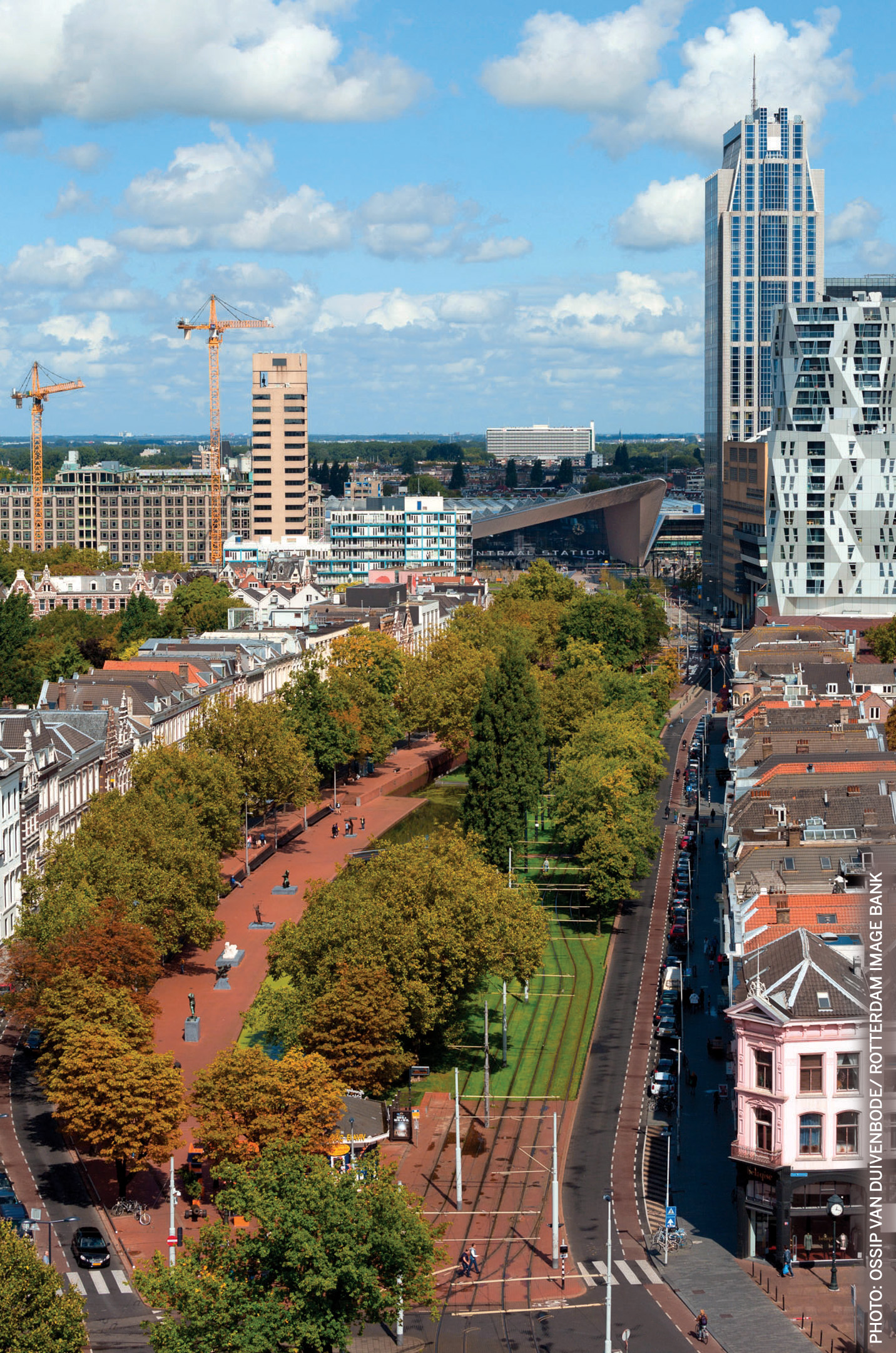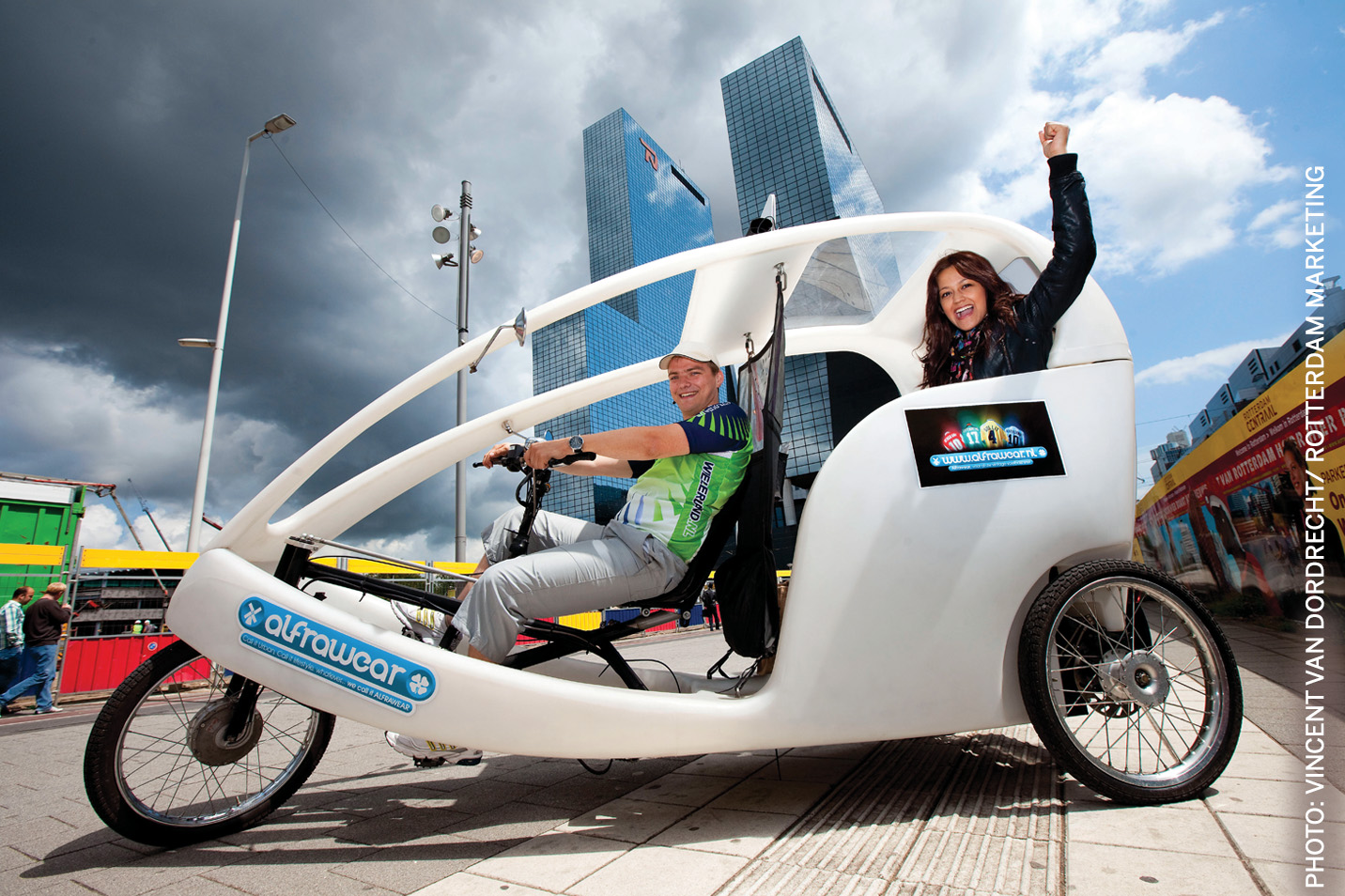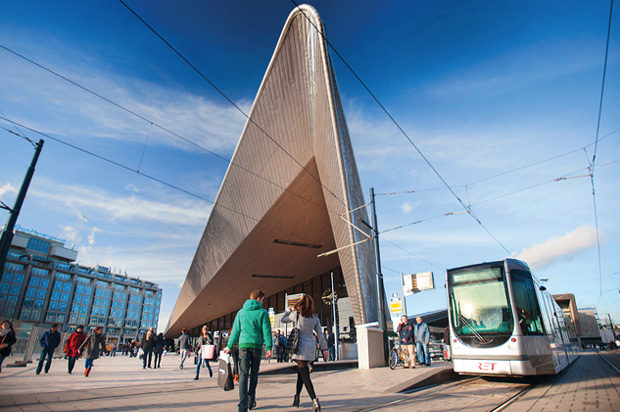Rotterdam was severely damaged during the Second World War. Almost the entire historic city centre, including the public realm around the train station, was destroyed. The new design of the station helps us to remember what was once the gateway to the city. Like other great public squares in big cities, Rotterdam New Central Station is a portal, which celebrates the return home of the warrior, explorer or hero.

International allure
The modern architecture of Rotterdam New Central Station gives it an international allure. This fits into the dynamics of Rotterdam as a metropolis. The station is an essential link into the European network of high-speed lines. Plus, it’s an interchange with bus, tram and metro stations within the city itself. We are talking about a public transport terminal with a gross floor area of 46,000 m² and an urban public domain with an additional 50,000 m² of floor space. Under the station square there is a five-layer parking garage for 800 cars, a storage area for 5,200 bicycles and the metro station.
Rotterdam New Central Station is a portal, which celebrates the return home of the warrior, explorer or hero
Station building as an iconic landmark
The iconic character of the city gateway has been restored with a huge roof designed by Benthem Crouwel Architects and MVSA Architects. The building literally floats above the public domain, topped with an extraordinary roof covering the station hall. A roof with gigantic measurements: 250 metres long, 156 metres wide, 15 metres high and a total area of 10.000 m². It’s made of 3,000 tons of steel and 136,000 solar cells.
Despite the dimensions of the structure, there’s still a lot of light on the platforms and in the rest of the public domain. The type of glass used for the roof provides variations in light transmittance. The different patterns of the solar cells produce different shadow configurations. These solar cells achieve a yield of 340 MWh per year, the largest application in solar energy for a station roof in the Netherlands.
Old characteristic elements from the station, such as the letters ‘CENTRAAL STATION’ and the old station clock, have been incorporated into the new design. The preservation of these elements helps the inhabitants recognise their hometown.

Bottom: Front side of the station. On the elevation, reuse of the letters and of the clock


The traveler as king
The concept of the new station and the public domain around it are clearly integrated into each other thanks to good communication between both design teams: West 8 Urban Design & Landscape Architecture and the city planner of Rotterdam, Maarten Struijs. The result of this collaboration can be seen in the metropolitan character of the architecture of the station and the design style of the public domain: the entire project exudes grandeur.
The station area is a well-organised public transport hub. The public domain works as a meeting place with a focus on entertainment and new media. In the station hall a 40m by 4.5m wide LED screen shows images of the international port of Rotterdam.
An important area of the public domain is designed as a large red stone carpet, rolling out to the city. The security gates to the trains and to the metro are the only barriers standing on it. A total of 52,000 m² of red stone has been used for the area between the south hall and the station hall. This red carpet becomes greener towards the city centre. Everything has been geared to make the traveler feel like a king on a red carpet.
The public domain is not only located both inside and outside the building, but also on several levels, like the transfer hall and the travelers passage. The underground connections to the parking garage, the bicycle storage and the metro station make the new central station an exciting travelling experience.
With its New Central Station, Rotterdam has not only created iconic architecture within a skillfully designed public domain, it has also re-created the joy of travelling where its users, inhabitants and visitors are treated like heroes.



Comments (0)